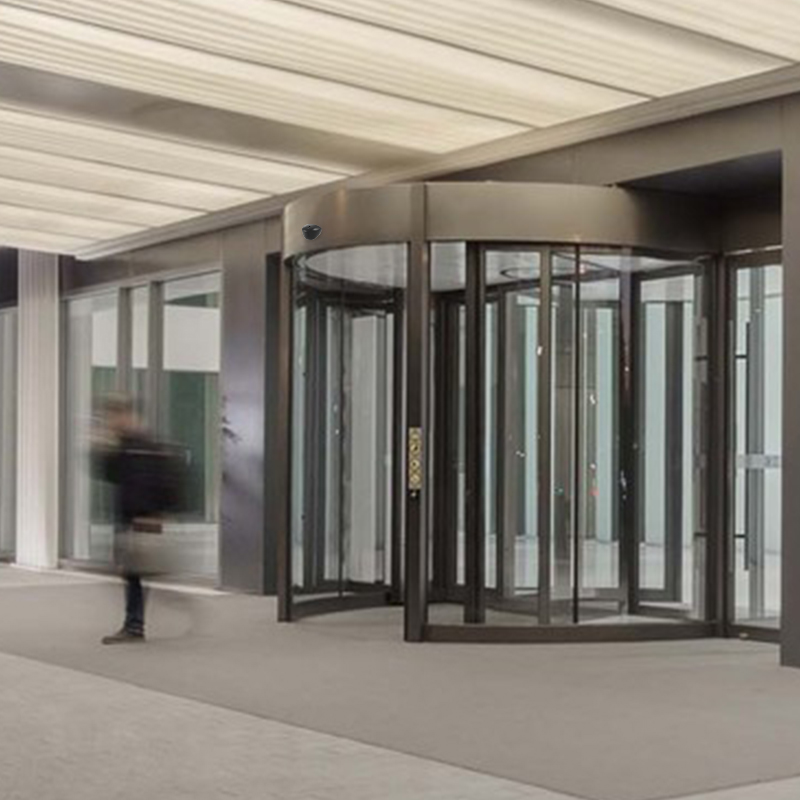How does the technology in automatic sliding door sensors work to ensure safety and efficiency?
Automatic sliding doors have revolutionized the way we interact with buildings, offering seamless entry and exit while enhancing accessibility and convenience. At the heart of these sophisticated systems are automatic sliding door sensors, which play a critical role in ensuring smooth operation, user safety, and energy efficiency. This article delves into the technology behind automatic sliding door sensors, shedding light on how they work to uphold safety standards and optimize door performance.

Understanding Automatic Sliding Door Sensors
Automatic sliding door sensors are devices designed to detect motion, presence, or obstacles in the vicinity of the door. These sensors act as the eyes of the door system, sending signals to the control unit to initiate door opening, closing, or obstruction detection. By continuously monitoring the surrounding environment, sensors enable automatic sliding doors to operate efficiently while minimizing the risk of accidents or collisions.
Types of Automatic Sliding Door Sensors
1. Infrared (IR) Sensors: Infrared sensors emit infrared light beams and detect changes in reflection or interruption caused by moving objects. When an individual approaches the door, their presence interrupts the infrared beams, triggering the door to open. IR sensors are commonly used in automatic sliding doors due to their reliability and effectiveness in detecting motion.
2. Microwave Sensors: Microwave sensors emit microwave signals and measure the reflection or Doppler shift caused by moving objects. These sensors are sensitive to changes in motion within their detection range, allowing them to detect approaching individuals or vehicles with high accuracy. Microwave sensors are often used in conjunction with IR sensors to provide additional detection capabilities.
3. Ultrasonic Sensors: Ultrasonic sensors emit high-frequency sound waves and measure the time it takes for the waves to bounce back after hitting nearby objects. Changes in the reflected sound waves indicate the presence of an obstacle, prompting the door to react accordingly. Ultrasonic sensors are particularly effective in detecting stationary obstacles, such as walls or furniture, and are commonly used in automatic sliding door systems.
How Automatic Sliding Door Sensors Work
1. Detection of Motion or Presence: When an individual approaches an automatic sliding door, the sensors detect their presence or motion through the emission and reception of signals, such as infrared light, microwave signals, or sound waves.
2. Signal Processing: The signals received by the sensors are processed by the control unit, which analyzes the data to determine the proximity, speed, and direction of movement of the detected object.
3. Activation of Door Operation: Based on the analysis of sensor data, the control unit activates the door mechanism to open or close the door, adjusting the speed and timing of operation to ensure smooth movement and safe passage.
4. Obstruction Detection: If an obstacle is detected in the path of the door, the sensors signal the control unit to halt door movement or reverse its direction to prevent collisions and ensure user safety.
Ensuring Safety and Efficiency
Automatic sliding door sensors play a crucial role in upholding safety standards and optimizing door performance in various ways:
Preventing Collisions: By continuously monitoring the surrounding environment, sensors detect obstacles or approaching individuals, allowing the door to react promptly to prevent collisions or accidents.
Enhancing Accessibility: Automatic sliding doors equipped with sensors offer seamless entry and exit for individuals with disabilities or limited mobility, promoting inclusivity and accessibility in public spaces.
Optimizing Energy Efficiency: Sensors help minimize energy consumption by activating door operation only when necessary, reducing heat loss or gain and improving indoor climate control.
Streamlining Traffic Flow: By facilitating smooth and efficient door operation, sensors contribute to the seamless flow of pedestrian traffic, particularly in high-traffic areas such as airports, shopping malls, and hospitals.
Conclusion
The technology behind automatic sliding door sensors represents a convergence of innovation, safety, and efficiency. By harnessing the capabilities of infrared, microwave, or ultrasonic sensing technologies, these sensors enable automatic sliding doors to operate seamlessly while prioritizing user safety and comfort. As technology continues to evolve, automatic sliding door systems will undoubtedly become even more sophisticated, offering enhanced features and capabilities to meet the evolving needs of modern buildings and infrastructure.







